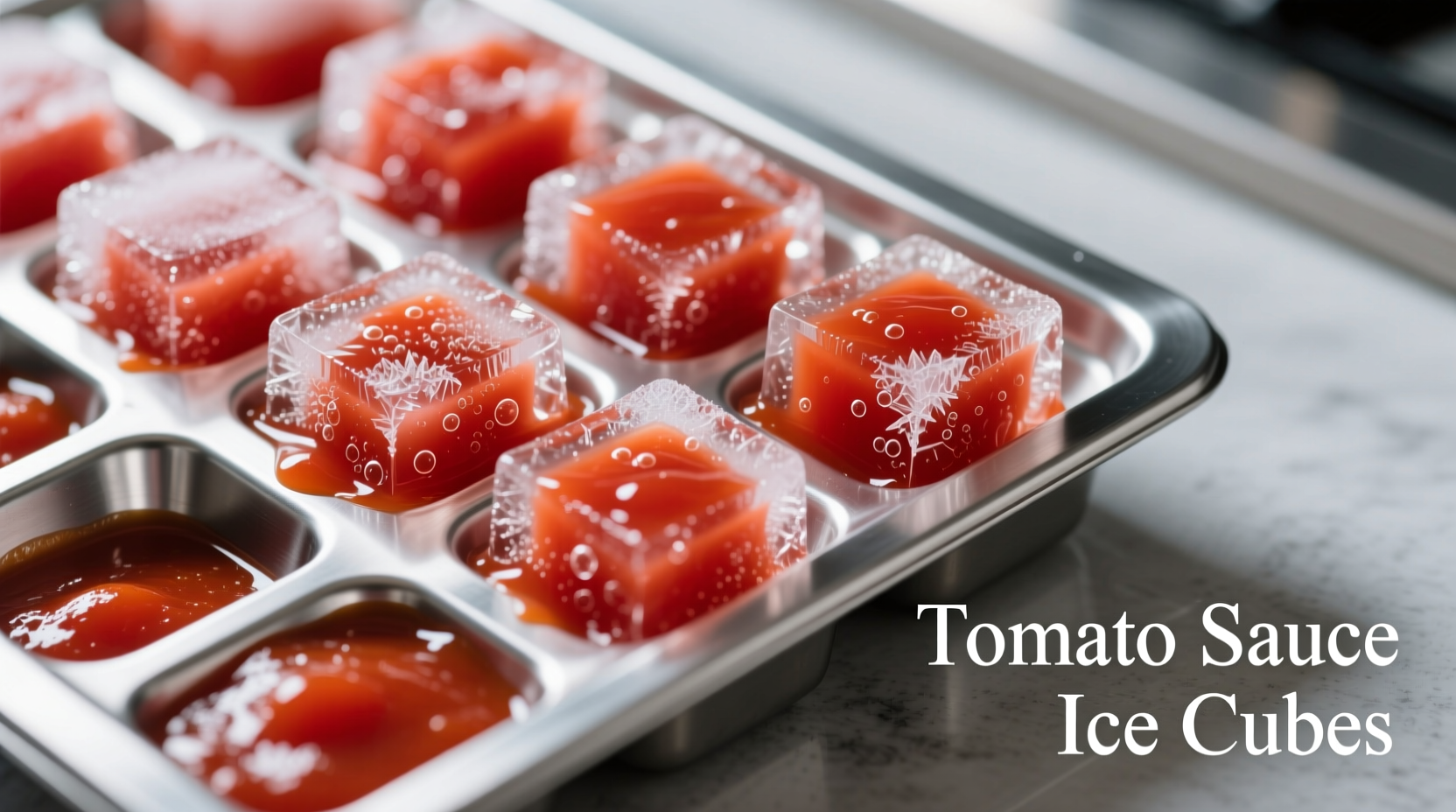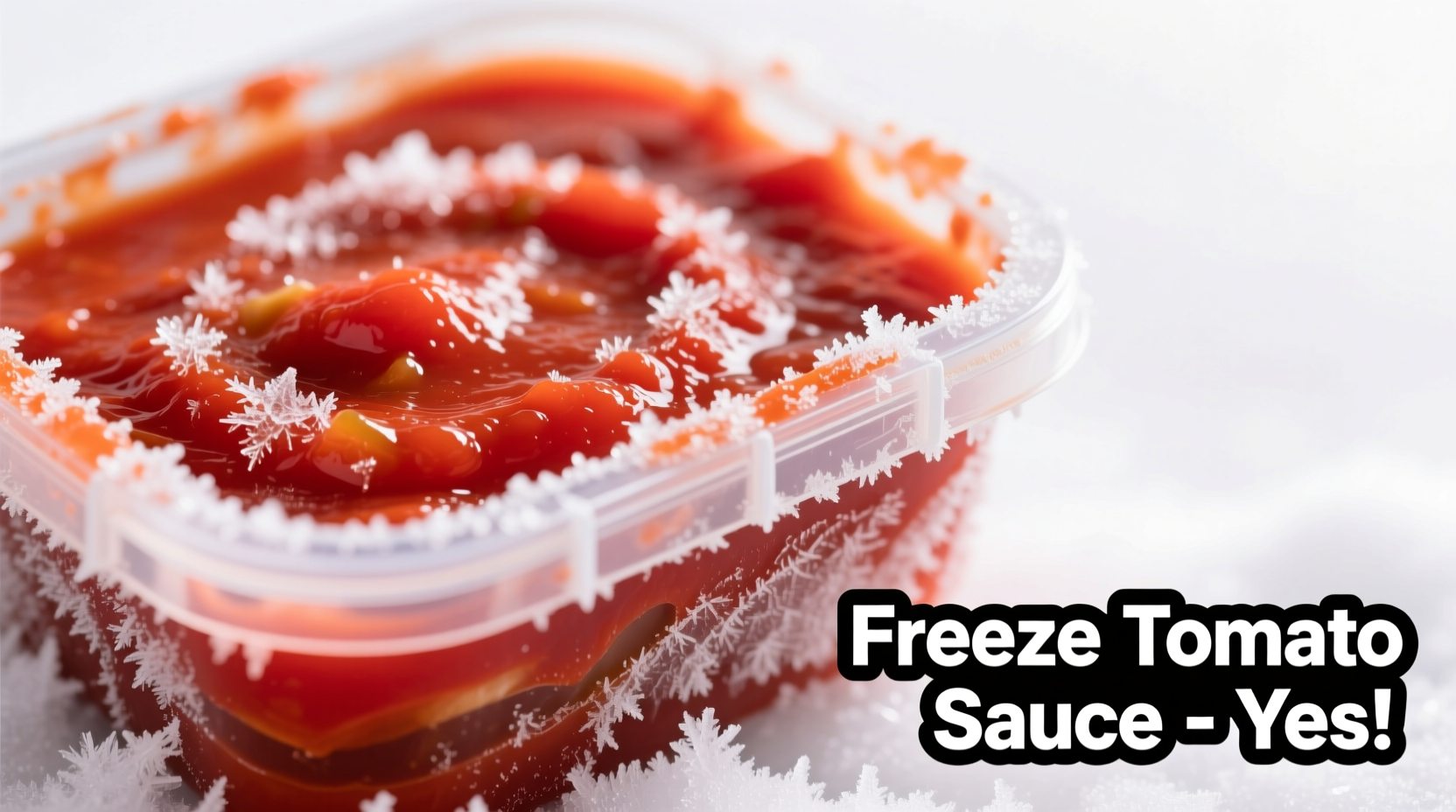Have you ever made a big batch of homemade tomato sauce only to realize you can't use it all before it spoils? Freezing tomato sauce is one of the smartest kitchen preservation techniques that home cooks can master, saving both time and money while ensuring you always have flavorful sauce ready for impromptu pasta nights. In this comprehensive guide, you'll discover exactly how to freeze tomato sauce properly, avoid common pitfalls, and enjoy restaurant-quality results months later.
The Science Behind Freezing Tomato Sauce
Tomato sauce freezes exceptionally well due to its high water content and natural acidity. According to the USDA Food Safety and Inspection Service, properly frozen foods remain safe indefinitely, though quality diminishes over time. The key to maintaining that fresh-from-the-pot flavor lies in understanding how freezing affects the sauce's structure.
Why Freezing Beats Canning for Most Home Cooks
While canning has its place, freezing offers significant advantages for home kitchen preservation:
- No specialized equipment required beyond standard freezer containers
- Much faster preparation time (no sterilization or processing)
- Better flavor retention compared to high-heat canning
- Lower risk of spoilage when done correctly
- Perfect for small-batch preservation
| Freezing Method | Best For | Storage Duration | Thawing Time |
|---|---|---|---|
| Ice cube trays | Portion control for recipes | 4-6 months | 1-2 hours |
| Freezer bags | Space efficiency | 4-5 months | 2-3 hours |
| Rigid containers | Long-term storage | 5-6 months | 3-4 hours |
Step-by-Step Freezing Process for Perfect Results
Cooling Your Sauce Properly
Never freeze hot sauce directly—it creates ice crystals that damage texture and promotes freezer burn. Allow your sauce to cool to room temperature within 2 hours of cooking. For faster cooling, transfer to a shallow container or use an ice bath while stirring occasionally. The National Center for Home Food Preservation recommends cooling foods rapidly to prevent bacterial growth during the temperature danger zone (40°F-140°F).
Selecting the Right Freezer Containers
Your container choice significantly impacts frozen sauce quality:
- For small portions: Use silicone ice cube trays (perfect for single-serving portions)
- For medium batches: Opt for heavy-duty freezer bags laid flat on baking sheets
- For large quantities: Choose rigid plastic containers with tight-fitting lids

Avoiding Common Freezing Mistakes
Many home cooks unknowingly compromise their frozen sauce quality through these preventable errors:
- Overfilling containers: Leave 1-inch headspace for expansion
- Ignoring air exposure: Press plastic wrap directly on sauce surface before sealing
- Poor labeling: Always note date and contents with permanent marker
- Freezing in large quantities: Portion into recipe-sized amounts
Thawing and Using Frozen Tomato Sauce
How you thaw frozen sauce dramatically affects final quality. The refrigerator method (transferring to fridge 24 hours before use) preserves texture best. For quicker thawing, place sealed container in cold water, changing water every 30 minutes. Never thaw at room temperature.
When reheating, bring sauce to a gentle simmer for 3-5 minutes. If separation occurs (common with meat-based sauces), simply stir vigorously. For cream-based sauces, add a small amount of cornstarch slurry while reheating to restore texture.
How Long Does Frozen Tomato Sauce Last?
While frozen foods remain safe indefinitely, quality peaks within specific timeframes:
- Plain tomato sauce: 6 months for optimal flavor
- Meat-based sauces: 4-5 months (fats can become rancid)
- Cream or cheese sauces: 2-3 months (dairy separates more readily)
The FDA Food Code confirms that properly frozen tomato-based products maintain quality for 4-6 months when stored at 0°F or below. After this period, while still safe, you may notice flavor degradation and texture changes.
Special Considerations for Different Sauce Types
Not all tomato sauces freeze equally well. Understanding these context boundaries prevents disappointment:
- Arrabbiata: Freezes exceptionally well (chili oils remain stable)
- Vodka sauce: May separate slightly but recovers with gentle reheating
- Pesto-tomato blends: Basil may darken but flavor remains intact
- Seafood sauces: Best consumed fresh (seafood texture deteriorates)
Troubleshooting Frozen Sauce Problems
Encountering issues with your frozen tomato sauce? These solutions fix common problems:
- Freezer burn: Trim affected portions; add fresh herbs during reheating
- Excess liquid: Simmer uncovered for 5-10 minutes to reduce
- Flavor loss: Brighten with fresh garlic, basil, or a splash of balsamic vinegar
- Texture separation: Use immersion blender for 10-15 seconds
Maximizing Flavor in Frozen Tomato Sauce
Professional chefs use these techniques to ensure frozen sauce tastes freshly made:
- Under-season slightly before freezing (flavors concentrate during freezing)
- Add fresh basil or parsley after thawing for vibrant flavor
- Include olive oil in the recipe (protects against freezer burn)
- Avoid adding delicate ingredients like fresh cheese until reheating











 浙公网安备
33010002000092号
浙公网安备
33010002000092号 浙B2-20120091-4
浙B2-20120091-4